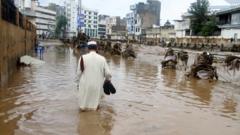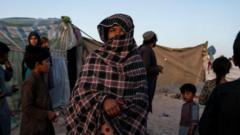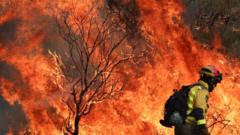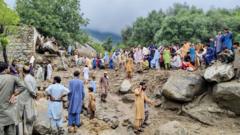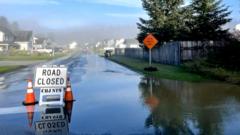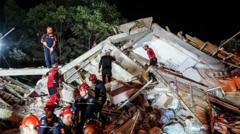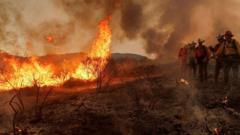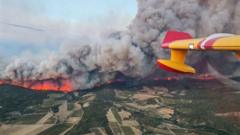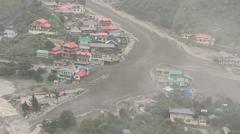As rescuers grapple with the aftermath of recent catastrophic flooding in Pakistan, more than 200 individuals remain unaccounted for in the Buner district of Khyber Pakhtunkhwa province. Recent monsoon rains have caused the deaths of over 300 individuals across the country, whilst local officials report that entire villages have been partially buried under landslides triggered by severe weather conditions.
Missing Persons from Catastrophic Floods in Pakistan Exceed 200 as Rescue Efforts Struggle
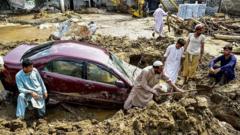
Missing Persons from Catastrophic Floods in Pakistan Exceed 200 as Rescue Efforts Struggle
Severe monsoon floods have led to over 200 people missing in Pakistan's Buner district, revealing the dire consequences of climate change worsened by seasonal rains.
According to Jehangir Khan, a spokesperson for the deputy commissioner office in Buner, at least 209 individuals are missing due to the floods, and many more might still be trapped. The increasing death toll has pushed emergency teams to conduct hurried rescue operations, with some areas virtually inaccessible due to road damage, complicating efforts to recover bodies and assist survivors. "Eight unidentified bodies have been buried, as relatives were nowhere to be found," Khan indicated, highlighting the devastating impact on family structures within affected communities.
Asfandyar Khattak, head of the regional disaster management authority, indicated that "dozens" of people are also unaccounted for in the neighboring Shangla district, further illustrating the catastrophic toll of this year's monsoon rains. Government forecasters anticipate persistent heavy rainfall in the northwest until August 21, prompting the declaration of several disaster zones.
The grim toll of the floods is exacerbated by climate change, as scientists warn that extreme weather events like these are becoming increasingly violent. Experts emphasize that heavy rains, which contribute to flash floods and landslides, are expected to intensify due to global warming. Historical rainfall data demonstrates a worrying trend with Punjab province experiencing a remarkable 73% increase in rainfall this year compared to the last, resulting in greater destruction than the previous monsoon season.
Meanwhile, neighboring Indian-administered Kashmir also faced severe flooding, with at least 60 reported fatalities and continuing adverse weather conditions. The climatic challenges in the region are compounded by the swift melting of glaciers in northern Pakistan, heightening the risk of rockslides and destabilizing the geography, which ultimately enhances the likelihood of flooding.
As Pakistan faces the ramifications of the current monsoon season, the National Disaster Management Authority continues its efforts to manage a crisis that has already claimed hundreds of lives since June, with the death toll surpassing 650 for the year. The focus remains on rescue operations, while communities mourn the profound losses resulting from the relentless forces of nature.
Asfandyar Khattak, head of the regional disaster management authority, indicated that "dozens" of people are also unaccounted for in the neighboring Shangla district, further illustrating the catastrophic toll of this year's monsoon rains. Government forecasters anticipate persistent heavy rainfall in the northwest until August 21, prompting the declaration of several disaster zones.
The grim toll of the floods is exacerbated by climate change, as scientists warn that extreme weather events like these are becoming increasingly violent. Experts emphasize that heavy rains, which contribute to flash floods and landslides, are expected to intensify due to global warming. Historical rainfall data demonstrates a worrying trend with Punjab province experiencing a remarkable 73% increase in rainfall this year compared to the last, resulting in greater destruction than the previous monsoon season.
Meanwhile, neighboring Indian-administered Kashmir also faced severe flooding, with at least 60 reported fatalities and continuing adverse weather conditions. The climatic challenges in the region are compounded by the swift melting of glaciers in northern Pakistan, heightening the risk of rockslides and destabilizing the geography, which ultimately enhances the likelihood of flooding.
As Pakistan faces the ramifications of the current monsoon season, the National Disaster Management Authority continues its efforts to manage a crisis that has already claimed hundreds of lives since June, with the death toll surpassing 650 for the year. The focus remains on rescue operations, while communities mourn the profound losses resulting from the relentless forces of nature.

